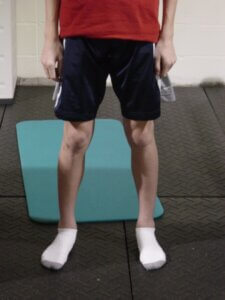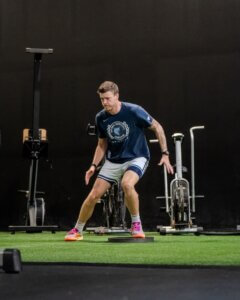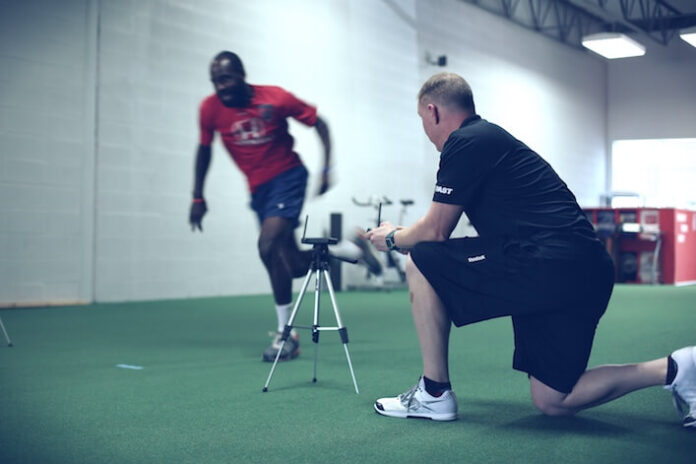Virtually every time I’m on a podcast these days, the host is asking me about my assessment.
I learned my first “real” assessment way back in 2003, when I spent a day with Craig Liebenson hanging out at his clinic in LA.
It was pretty dope – here I was a 24 year-old-kid, chilling in that beautiful Cali weather, and Craig broke down the ins-and-outs of his assessment process.
And I can’t thank Craig enough, because that one day kindled an interest and love of assessments that I’ve carried with me from that day forward.
But rather than just sticking with the status quo, as I’ve changed and evolved as a coach, so has my assessment process.
I’ve done the static posture pics.
The table tests.
The movement screens.
And even the more performance-based stuff.
Over that time, I’d like to think I’ve learned from some of the best of the best, as well as some dudes that better represented used-car salesman versus true fitness pros.
But through all of it, whether you just started training and coaching people yesterday, or you’ve been doing this for 1, 2 or even 3 decades, here are a few thingsI think everyone needs to hear…
1) Everyone Should Use SOME FORM of Assessment
If you’re just getting started, as the saying goes, “you don’t know what you don’t know.”
Maybe you don’t know what a perfect squat, lunge or hip hinge looks like.
Maybe you don’t understand the difference between good postural alignment, and that of someone who (potentially) has more issues.
And you know what?
That’s okay.
We ALL start here.
If I could do it all over again, the most important thing I’d tell myself is “I’m just working to get good reps in.”
Because you know what?
Anyone with half a brain knows a 20-something isn’t going to have all the answers.
But you know more than the client/athlete does, and they hope that you’ll take the time to get better and learn as you grow.
So if you’re early in your career, your goal should be to become a master detective.
Ask great questions.
 Look for clues.
Look for clues.
When that new athlete complains of right knee pain, what do your eyes tell you?
- Is their entire right leg turned to the outside?
- Is there a weird twist through their knee?
- Or maybe when they squat or lunge, do they lose that foot/knee/hip alignment?
Take notes, continue to educate yourself, and work on getting better every day.
And most importantly just remember that the goal isn’t to be perfect, but to get those reps in and connect the dots over time.
2) You Can Assess as Much (or as Little) as You Want
When I first started out, my assessment was incredibly basic.
- Posture and alignment,
- Breathing patterns, and
- Foundational movements (squatting, hinging, etc.)_
And you know what?
It served me pretty darn well, and I had a lot of success.
 Nowadays that assessment process has expanded quite a bit, to where I now cover:
Nowadays that assessment process has expanded quite a bit, to where I now cover:
- An entry Q&A,
- Posture and alignment pics,
- Table tests,
- A foundational movement evaluation (squat, lunge, hinge, push-ups, etc.)
- Their athletic movement foundation (accelerate, backpedal, lateral shuffle, jump, etc.)
- Performance-based measures (acceleration times, Vertec jumps, force plate testing, etc.) and
- A final Q&A/overview and recommendation of services.
And if that sounds like a lot, it’s because it is!
But here’s the big takeaway…
It’s not necessarily about evaluating more during the session – it’s about making sure WHAT YOU EVALUATE is valuable and meaningful to YOU.
3) You Can Use As Much (or as Little) Tech as You Want
I’s easier now than ever before to get distracted – or make excuses – because of shiny objects.
Some people think if they don’t have laser timing gates, force plates, or 3D movement capture software, that they can’t do a high-level assessment.
And you know what? That’s total BS.
 Look, I love Hawkin Dynamics.
Look, I love Hawkin Dynamics.
Yes, they’re a sponsor for my podcast and they’ve have supported me every step of the way in my sports-science journey.
But more importantly, integrating them into my assessment process has taken everything I do to the next level.
But you know what?
You don’t NEED high-end tech when you’re just getting started.
If I were building an assessment from the ground up, I would absolutely be thinking about two things:
- Functionality: Does this test/assessment give me the information I need to write a better program? And
- Cost: Unless you work for a pro or high-level collegiate team, cost is absolutely an issue. Start with lower budget options FIRST, get results, and then scale/evolve as you get better.
If you get really good at your standard assessment first, then when you DO add tech later on, it’s like adding jet fuel to the fire.
Final Thoughts: The REAL Difference Between Good and Bad Assessments…
As I wrote all this out, I realized I’ve had times over the years where my assessment was as valuable as it should’ve been.
And here’s why – I was chasing information over outcomes.
Let me explain…
A “good” assessment might give you information – how much range of motion someone has, what they can/can’t do, where they have pain, etc.
And that’s all fine and dandy, but I don’t think that should be the end goal.
In contrast a great assessment tells you what to do to get the results you want.
For instance, knowing someone has knee pain when they squat is great, but it doesn’t tell you what to do instead.
Taking them through a solid assessment not only tells you why they have that pain, but what you can do instead – to either train around the issue or resolve it all together.
So hopefully I’ve convinced you that assessments are important, and that you should be including them with every client or athlete you coach.
If you’d like to learn more about my assessment process, here are a few ways you can do that:
Thanks so much for reading and I hope your assessments get a little bit better every time you run them!
All the best,
MR




